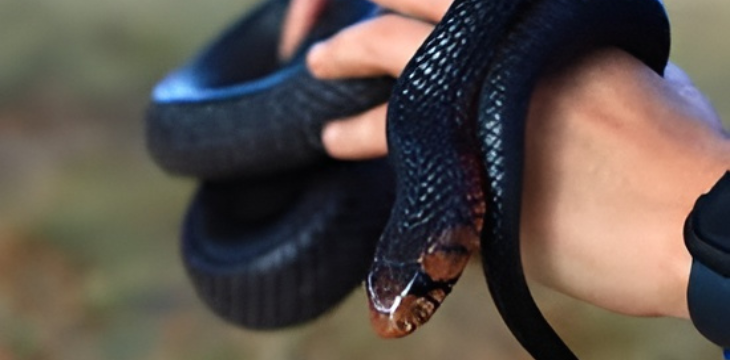When it comes to wildlife, Florida’s got it all. From alligators sunning themselves on golf courses to manatees meandering through crystal-clear springs, the Sunshine State is a haven for animal lovers. But there’s one creature that often sends shivers down spines and raises eyebrows: snakes. Love ’em or hate ’em, snakes are an integral part of Florida’s ecosystem. This article takes a deep dive into the serpentine world of Newsbreak Florida snakes, revealing fascinating facts, dispelling common myths, and offering practical advice for those unexpected encounters. So, buckle up as we slither through the details!
Table Of Contents
Newsbreak Florida Snakes Diversity: A Colorful Palette
The Good, the Bad, and the Beautiful
Florida is home to a whopping 46 native snake species. Yes, you read that right—46! These snakes come in all shapes, sizes, and colors, each playing a unique role in the ecosystem. Here are a few highlights:
- Eastern Diamondback Rattlesnake: The largest venomous snake in North America, known for its distinctive rattle and diamond pattern.
- Corn Snake: A non-venomous favorite among snake enthusiasts, appreciated for its vibrant colors and calm demeanor.
- Eastern Indigo Snake: The longest snake in North America, recognized for its glossy blue-black scales and gentle nature.
Venomous Vs. Non-Venomous Newsbreak Florida snakes
It’s crucial to know which snakes are dangerous and which are harmless. Florida is home to six venomous species:
- Eastern Diamondback Rattlesnake
- Timber Rattlesnake
- Pygmy Rattlesnake
- Cottonmouth (Water Moccasin)
- Copperhead
- Coral Snake
But don’t let these six overshadow the other 40 non-venomous species, many of which are beneficial to humans by controlling pest populations.
Fun Fact: Snake Mimicry
Some non-venomous snakes have evolved to mimic their venomous counterparts. Take the harmless Scarlet Kingsnake, for example. It sports bright red, yellow, and black bands similar to the venomous Coral Snake. A handy rhyme helps tell them apart: “Red touch yellow, kills a fellow; red touch black, friend of Jack.”
Living with Newsbreak Florida Snakes: A Reality Check
Common Myths Debunked
Snakes often get a bad rap due to myths and misunderstandings. Let’s set the record straight:
- Myth: All snakes are aggressive. Fact: Most snakes would rather flee than fight. They strike only when threatened.
- Myth: Snakes are slimy. Fact: Snakes have dry, smooth scales.
- Myth: All snakes are venomous. Fact: As mentioned earlier, only six of Florida’s 46 native species are venomous.
What to Do If You Encounter a Newsbreak Florida Snakes
Seeing a Newsbreak Florida snakes in your yard can be startling. Here’s how to handle it:
- Stay Calm: Most snakes aren’t interested in humans and will move away on their own.
- Give It Space: Maintain a safe distance. Don’t try to catch or kill the snake.
- Identify It: If possible, try to identify the snake from a distance. This can help determine if it’s venomous.
- Call for Help: If you’re unsure or if the snake poses a threat, contact local wildlife control.
Snake-Proofing Your Home
Want to keep snakes out of your house and yard? Here are some tips:
- Seal Cracks and Gaps: Ensure doors, windows, and foundation are sealed.
- Remove Food Sources: Keep rodents and other small animals at bay.
- Trim Vegetation: Snakes like hiding in tall grass and bushes. Regularly trim your yard.
- Install Fencing: Specialized snake-proof fencing can be effective.
Newsbreak Florida snakes Invasive Snakes: A Growing Concern
The Burmese Python Invasion
Perhaps the most infamous of Florida’s invasive snakes is the Burmese Python. Originally from Southeast Asia, these giants can grow over 20 feet long. They were introduced to Florida through the exotic pet trade, and many were released into the wild when they became too large to handle.
Impact on the Ecosystem
The impact of Burmese Pythons on Florida’s ecosystem is profound. They prey on native wildlife, including mammals, birds, and even alligators! Their presence has caused significant declines in some native species populations.
Efforts to Control the Population
Florida has implemented several measures to control the Burmese Python population:
- Python Removal Programs: The Florida Fish and Wildlife Conservation Commission (FWC) conducts regular python hunts and incentivizes the public to participate.
- Research and Tracking: Scientists are studying Python behavior and developing new tracking technologies to locate and remove them.
- Public Awareness Campaigns: Educating the public about the dangers of releasing exotic pets into the wild.
FAQs About Newsbreak Florida snakes
Q: Are all snakes in Newsbreak Florida snakes dangerous?
A: No, only six of the 46 native species are venomous. Most are harmless and beneficial.
Q: What should I do if a Newsbreak Florida snakes bites me?
A: Seek immediate medical attention, especially if you suspect the snake is venomous. Try to remember the snake’s appearance for identification.
Q: How can I tell if a snake is venomous?
A: Learn to recognize the specific patterns and behaviors of Florida’s venomous snakes. When in doubt, keep a safe distance.
Q: Can I keep a snake as a pet in Florida?
A: Yes, but it’s important to choose a species that’s appropriate for captivity and legal to own. Always research and follow local regulations.
Q: Why are there so many snakes in Florida?
A: Florida’s warm climate, diverse habitats, and abundant food sources create an ideal environment for snakes.
Conclusion
Newsbreak Florida snakes are more than just creepy crawlies; they’re vital to the ecosystem and fascinating in their own right. From the majestic Eastern Diamondback Rattlesnake to the invasive Burmese Python, each snake tells a story of adaptation and survival. While it’s natural to feel apprehensive about these reptiles, understanding their role and respecting their space can lead to a harmonious coexistence. So next time you hear a rustle in the grass, remember, it’s likely just another resident of the Sunshine State going about its business. Stay curious, stay informed, and embrace the wild side of Florida!


